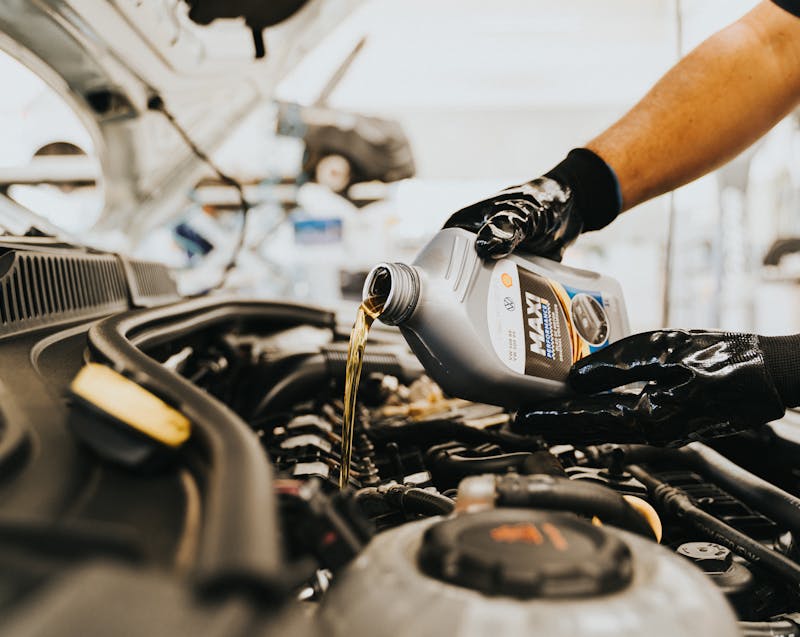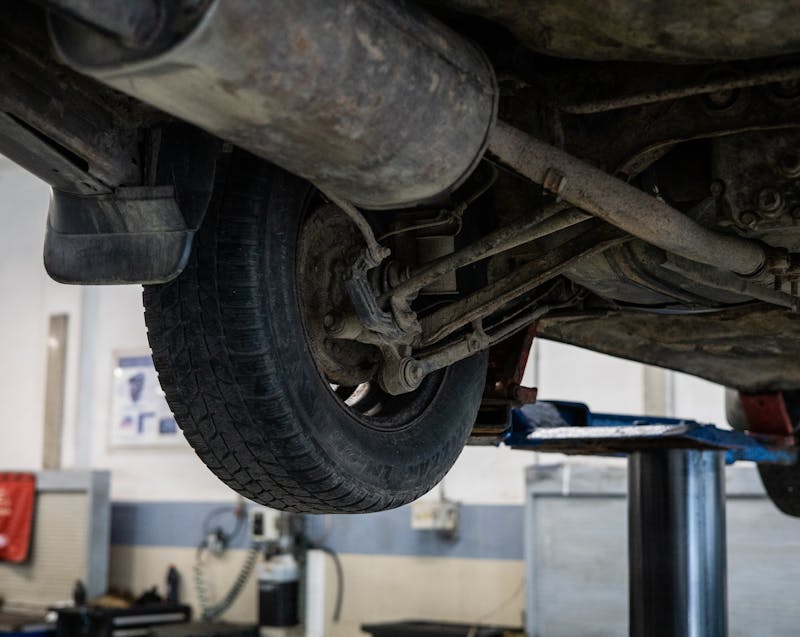- Mileage milestones matter – 30k, 60k, and 100k miles are critical checkpoints for preventative maintenance that protect your car’s performance and value.
- 30,000 miles = first major checkup – Focus on oil and filter changes, tire rotation, brake inspection, and fluid checks to prevent small issues from escalating.
- 60,000 miles = critical component replacement – Services like spark plugs, timing belt (if applicable), brakes, and transmission fluid are essential for reliability and safety.
- 100,000 miles = high-mileage care – Expect bigger jobs like timing belt/chain, water pump, full fluid replacement, suspension overhaul, and fuel system cleaning.
- Fluids are the lifeblood of your car – Regular oil, coolant, brake, and transmission fluid maintenance prevents costly failures.
- Skipping maintenance costs more long term – Delaying service risks engine, transmission, or brake failure, which are far more expensive than routine upkeep.
- Consistent maintenance extends vehicle life – With discipline and quality parts, many cars can last 200k miles or more.
Owning a car is more than just driving from one point to another—it’s about ensuring that your vehicle stays safe, efficient, and reliable throughout its lifespan. Every car has a recommended maintenance schedule, and understanding what services are needed at key mileage points can save you from costly repairs and sudden breakdowns. At 30,000, 60,000, and 100,000 miles, your car enters critical stages where specific inspections, fluid changes, and part replacements are essential.
This guide explores the most important maintenance tasks at each milestone, why they matter, and how they affect your car’s longevity and performance. Whether you drive daily for work, take long road trips, or use your car occasionally, staying on top of these milestones will help you get the most out of your vehicle.
Why Mileage-Based Car Maintenance Is Essential
Mileage-based maintenance isn’t just a recommendation from your mechanic—it’s an essential strategy for preserving your vehicle’s value and safety. Car components wear down at predictable intervals. Fluids lose effectiveness, belts stretch, and filters clog. By following mileage-based checkpoints, you reduce the risk of sudden breakdowns, improve fuel efficiency, and maintain the resale value of your car.
Skipping scheduled maintenance may save money in the short term, but it can lead to significant expenses later. For example, neglecting oil changes or transmission service can cause engine or gearbox failure—repairs that cost thousands. Mileage milestones act as reminders, ensuring you address issues before they become severe.
With that in mind, let’s break down what your car needs at 30,000 miles, 60,000 miles, and 100,000 miles to stay road-ready.
What Maintenance Does My Car Need at 30,000 Miles?

Reaching the 30,000-mile mark usually happens within the first two to three years of ownership. At this point, your vehicle is still relatively new, but certain parts start to show wear. Think of this milestone as your car’s first major checkup. Addressing issues early ensures small problems don’t escalate into expensive repairs.
Here’s what should be prioritized at 30,000 miles:
- Oil and Filter Change: By this stage, your engine has gone through hundreds of heating and cooling cycles. Fresh oil keeps it lubricated and reduces internal wear.
- Air Filter Replacement: A clogged air filter restricts airflow, reducing fuel efficiency and engine performance. Replacing it helps the engine breathe better.
- Cabin Air Filter Check: Ensures that the air circulating inside your car stays clean, especially important for those with allergies.
- Tire Rotation and Alignment: Tires wear unevenly, and rotating them extends their lifespan. Alignment checks prevent premature tire damage.
- Brake Inspection: Pads and rotors may show early signs of wear. Inspecting them ensures that the stopping power remains reliable.
- Fluid Checks: Coolant, brake fluid, and transmission fluid should all be inspected and topped up if necessary.
At 30,000 miles, the goal is preventative care. By changing filters, rotating tires, and inspecting major systems, you prepare your vehicle for the miles ahead.
The Importance of Fluid Checks at 30,000 Miles
One of the most overlooked aspects of vehicle maintenance is fluid health. Your car relies on several fluids to function properly—engine oil, coolant, brake fluid, transmission fluid, and power steering fluid. By 30,000 miles, some may begin to degrade or show signs of contamination.
- Engine Oil: Change it according to your manufacturer’s recommendation—usually every 5,000 to 7,500 miles for modern cars.
- Coolant: Ensures your engine doesn’t overheat. Inspect for proper levels and condition.
- Brake Fluid: If it looks dark or dirty, a flush may be needed to maintain braking performance.
- Transmission Fluid: Some manufacturers recommend checking as early as 30k.
Neglecting fluids is like running a marathon without drinking water—eventually, your car will overheat or fail under pressure.
What Maintenance Does My Car Need at 60,000 Miles?
At 60,000 miles, your car has seen substantial use. This milestone is often referred to as the “second major service” and usually requires more intensive work than at 30k. By now, several components have experienced significant wear and may need replacement.
Key maintenance tasks include:
- Timing Belt (if applicable): Some vehicles require timing belt replacement at 60,000 miles. Failure to replace it can cause catastrophic engine damage.
- Spark Plug Replacement: Worn spark plugs reduce fuel efficiency and can cause misfires. Replacing them restores smooth engine performance.
- Brake Pads and Rotors: By 60k, most cars need at least one set of new brake pads. Rotors may also need resurfacing or replacement.
- Battery Check or Replacement: Car batteries typically last 3–5 years, making 60,000 miles a common time for replacement.
- Transmission Service: For automatic vehicles, this often includes a fluid and filter change.
- Suspension Inspection: Shocks, struts, and bushings begin to wear out, impacting ride comfort and handling.
- Coolant Flush: Prevents buildup of rust or scale deposits in the cooling system.
This service interval focuses on replacing critical parts that directly impact performance and safety. Skipping 60k maintenance can lead to breakdowns on the road and significantly higher repair bills.
Why the 60,000-Mile Service Is Critical
The 60k mark is when many warranty periods expire, meaning you’ll be responsible for major repair costs if something fails. That’s why it’s essential to treat this service milestone seriously.
- Reliability: Replacing spark plugs and belts ensures smooth starts and consistent performance.
- Safety: Brake and suspension inspections reduce the risk of accidents caused by worn parts.
- Efficiency: Clean fluids and new plugs maximize fuel economy.
If you plan to keep your vehicle beyond 100,000 miles, investing in the 60k service is crucial. It sets the stage for longevity and minimizes the likelihood of major failures later.
What Maintenance Does My Car Need at 100,000 Miles?

Crossing 100,000 miles is a milestone that many car owners celebrate. Modern vehicles are built to last well beyond this point, but only if properly maintained. At 100k, your car is considered “high mileage,” and proactive maintenance becomes more important than ever.
Key tasks for this milestone include:
- Timing Belt or Chain Replacement: If not done at 60k, it must be addressed by 100k to avoid engine failure.
- Water Pump Replacement: Often replaced along with the timing belt, since both are labor-intensive.
- Full Fluid Replacement: This includes engine oil, coolant, brake fluid, transmission fluid, and power steering fluid.
- Suspension Overhaul: Shocks, struts, and control arms may need replacement to restore ride comfort and handling.
- Fuel System Cleaning: Carbon deposits accumulate over time. A professional cleaning improves fuel economy and power.
- Exhaust System Check: Older vehicles may develop leaks or corrosion in the exhaust.
- Hoses and Belts: Rubber components weaken with age and should be replaced to prevent sudden breakdowns.
- Alternator and Starter Inspection: These components often show signs of wear past 100k.
Reaching 100,000 miles is proof that your vehicle has been well cared for. By investing in these services, you can easily push your car to 150,000 miles or more.
Extending Vehicle Life Beyond 100,000 Miles
Many car owners wonder if their vehicle will survive past 100k. With proper care, it’s not uncommon for modern cars to reach 200,000 miles or even 300,000 miles. The secret lies in staying consistent with maintenance and addressing small problems immediately.
- Stick to Oil Change Intervals: Never extend oil changes beyond what your manufacturer recommends.
- Use High-Quality Parts: Cheap parts wear out faster and may compromise safety.
- Pay Attention to Warning Lights: Ignoring dashboard alerts can escalate into major repairs.
- Schedule Annual Inspections: Even if you drive less, annual checks help spot hidden issues.
Long-term vehicle health is less about luck and more about discipline. By investing in regular maintenance, your car can remain dependable well beyond 100,000 miles.
DIY vs. Professional Maintenance: What’s Best?
Some car owners prefer handling maintenance themselves to save money. Others trust certified mechanics for peace of mind. Both approaches have their benefits.
- DIY Maintenance (Good for Simple Tasks): Oil changes, air filter replacements, tire rotations, and cabin filter swaps can often be done at home with basic tools.
- Professional Maintenance (Best for Complex Jobs): Timing belts, transmission flushes, and suspension replacements require specialized knowledge and equipment.
The key is knowing your limits. Attempting complex repairs without the right tools or experience can lead to costly mistakes. If in doubt, leave major jobs to professionals.
How Mileage-Based Maintenance Saves Money
It may seem like a burden to spend hundreds of dollars at each service milestone, but maintenance is always cheaper than repair. For example:
- Skipping Timing Belt Replacement: Can lead to engine failure, costing $3,000–$5,000.
- Neglecting Brake Service: Worn pads can damage rotors, doubling or tripling repair costs.
- Ignoring Fluids: Transmission rebuilds cost thousands, while fluid changes cost a fraction.
By investing in timely maintenance, you spread out costs and avoid sudden financial shocks. In the long run, consistent upkeep is the most economical approach to car ownership.
Final Thoughts on Mileage-Based Car Maintenance
Every car owner wants a vehicle that’s safe, efficient, and reliable. The best way to achieve that is by following mileage-based maintenance intervals. At 30,000 miles, focus on filters, fluids, and tires. At 60,000 miles, replace key components like spark plugs and timing belts. At 100,000 miles, prepare for more intensive work, including suspension and fuel system care.
Maintenance isn’t just about keeping your car running—it’s about extending its life, saving money, and ensuring safety on the road. When you stay proactive, your vehicle can reward you with many more miles of dependable service.